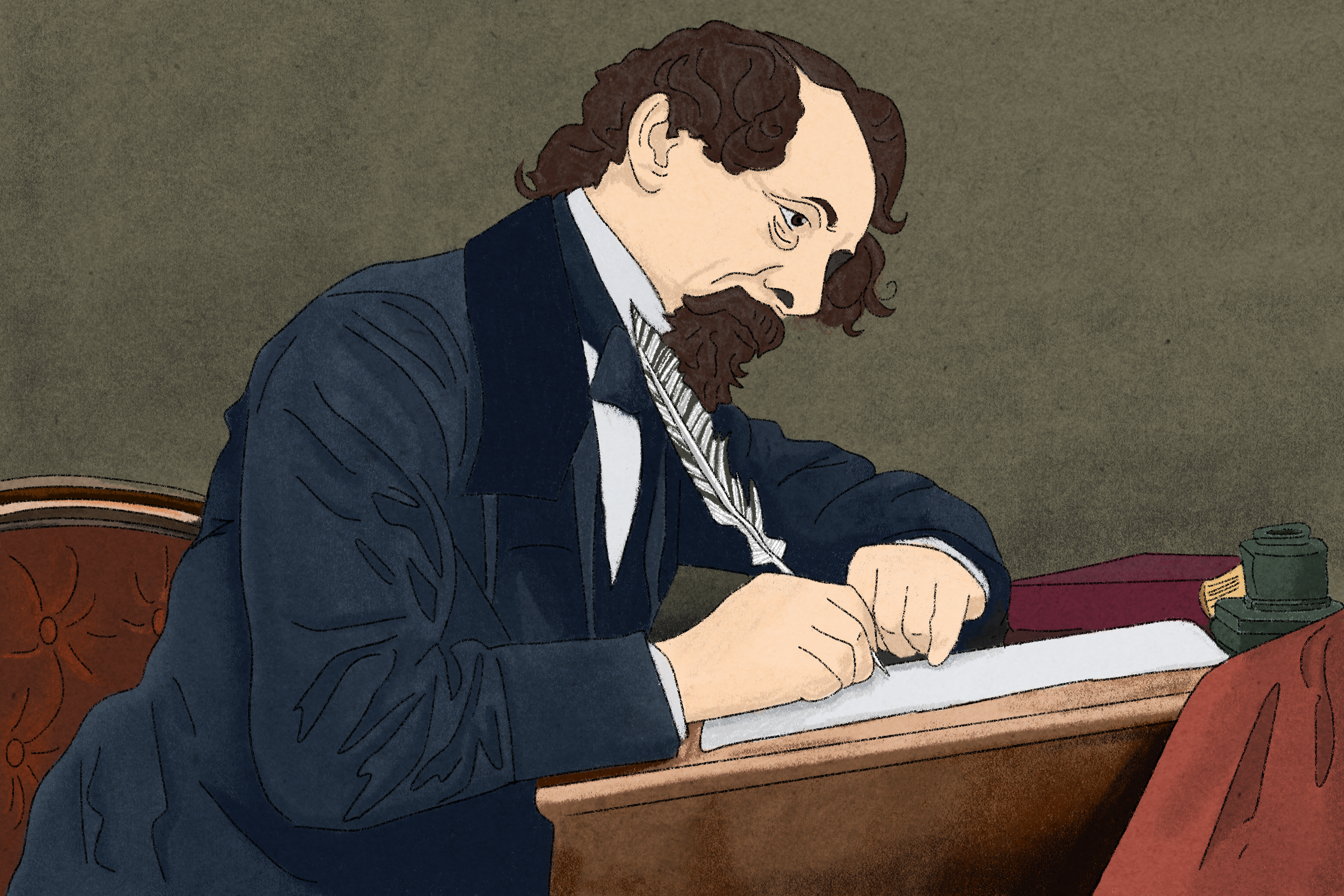How Charles Dickens uses fantastical imagery to captivate and teach children life lessons that go beyond Victorian England.
Any child growing up in a country that celebrates Christmas has most likely experienced Charles Dickens’s “A Christmas Carol”, either in writing, on stage or on screen. The prevalence of this tale is a result not only of the story’s lasting influence on modern Christmas traditions, or its fantastical imagery but also the lessons that it teaches children.
Charles Dickens was born on Feb.7, 1812, in Portsmouth, England to a working-class family. He spent the early years of his childhood staying in, because of his poor health, and reading. Before turning 16 Dickens had to drop out of school twice, first to work at a boot-blacking factory alongside the River Thames then as an errand boy at a law office. His difficult childhood as a working-class child in Victorian London is regarded as a major influence on his works, given the prevalence of working and upper class characters in his works. “A Christmas Carol” follows an old and wealth-driven businessman, Ebenezer Scrooge, as he learns how and why he should be a kinder man towards his community and family. The moments spent with Ebenezer during the story’s beginning highlight many of his negative traits, such as greed, selfishness and misanthropic tendencies. At one point, Scrooge refuses to attend his nephew’s Christmas Eve party, instead choosing to work. Another example would be when Scrooge refused to give any donations to the poor, instead suggesting that they could either go to prison, get a job or die.“…those who are badly off must go there”;“they had better do it and decrease the surplus population…”
Scrooge’s first encounter is with the Ghost of Christmas Past, who shows Scrooge a few regrets from his life, stemming from his misanthropic nature; one of these being the regret he feels for not treating his short-lived nephew with more kindness. Scrooge also realizes how a previous boss, Fezziwig, was a good man because he treated his workers well. The Ghost teaches Scrooge and the children reading the story that they should be kinder to those around them since that might not always be the case..But this lesson also teaches kids, maybe even for the first time, that life can be surprisingly finite, leaving behind only experiences; prone to evoking joy and regret.
The next ghost that visits Scrooge is the Ghost of Christmas Present. The Ghost takes Scrooge to Christmas Morning, letting him view the activities of his employees and family. His employees can celebrate a happy-family Christmas, even though they are impoverished and their youngest child, Tiny Tim, is crippled. But most importantly, the ghost shows Scrooge the greatest threat to humanity: want and ignorance. Want is the necessities people need to survive and ignorance is the people who can help but who choose to ignore them. The ghost states to be especially afraid of ignorance as that is what will ruin Scrooge. The lesson, for children, being that they can be happy without wanting and having a lot but they should also be willing to fulfill the wants of others.
The final ghost to visit Scrooge is the Ghost of Christmas Future who shows the man what Christmas will be like after his death. Instead of seeing a population mourning the death of an important figure, many citizens are celebrating monetary gains. One example includes a family excited by the fact that the personthey were in debt to is dead, thus allowing them to pay it off. This final encounter shows Scrooge that in the end, his legacy will be a miserable one that people are not too keen to remember fondly. Scrooge learns that changing the way he is now can have a positive impact on the world and his legacy. This scene can teach children that being a good person will have a positive impact on the world in the long term and that people will forever remember how you made them feel.
In the end, “A Christmas Carol,” teaches children that they should value the world around them through kindness and charity. The tale highlights the various pitfalls that a person may fall into as they age, such as becoming greedy or selfish, and then highlights the negative impact of those traits. The tale also points out the main issues in society; greed, poverty, apathy and despair, alongside their solutions. Dickens also shows how the way we act directly affects the people around us, showing children that our world is much deeper than they might initially suspect. The prevalence of Charles Dickens’s classics shows just how importantly society views work such as “A Christmas Carol” as tools that can educate the younger generation towards positive morals.

















